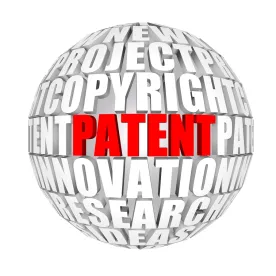On March 24, 2020, the US Patent and Trademark Office (“USPTO”) launched the “Expanding Innovation Hub” (“Hub”), a centralized online platform to make the patent process more accessible to diverse inventors. USPTO Director Andrei Iancu and Deputy Director Laura Peter described the Hub as part of the USPTO’s efforts to “inspire more women, minorities, veterans, and geographically and socioeconomically diverse applicants to join the innovation economy.”
The Hub is comprised of three components: The first is the Demystifying the Patent System toolkit, designed to help inventors understand the process for obtaining a patent. The second, a Mentoring toolkit, is intended to assist organizations in establishing an infrastructure to “connect experienced innovators with the next generation” of inventors within their organization. The third, Community Group Resources, is designed to help organizations establish an infrastructure to connect groups of employees with shared characteristics, interests, and goals.
The USPTO leadership indicated that the Hub supplements its other efforts to improve diversity within the patent process. These others efforts include holding events like “Invention-Con” and the “Women’s Entrepreneurship Symposium;” continued assistance to pro se inventors; continuing its intellectual property (IP) pro-bono legal services through 60 participating law school clinics; and expanding the USPTO’s geographic reach by providing inventors with IP research assistance at USPTO headquarters, its 4 regional offices and 83 resources centers around the country.
The Hub builds on the USPTO’s October 2019 report (“Report”) , which was mandated by Congress under the Study of Underrepresented Classes Chasing Engineering and Science Success (SUCCESS) Act, and the USPTO’s February 2019 Progress and Potential report on women inventors (“Progress”) (discussed in a prior blog), both of which highlighted the deplorable underrepresentation of women and minorities in the patent process.
The Success Act requires the USPTO Director to “identify publicly available data on the number of patents annually applied for and obtained by women, minorities, and veterans and the benefits of increasing the number of patents applied for and obtained by women, minorities, and veterans and the small businesses they own.”
The Report provided the following examples of the lack of diversity within the patent process.
-
Citing 2016 research data, the Report stated that US born Blacks or African Americans and Hispanics were “significantly underrepresented among innovators”. The Report noted that although Blacks or African Americans represent 11.3% of the US population, they only represent 0.3% of its innovators; and that although Hispanic Americans represent 11.5% of the US population, they only represent 1.4% of US innovators, as measured by the patent data.
-
The Report also noted that the USPTO’s most recent February 2019 study found that only 12% of U.S. Patents granted in 2016 listed women as investors.
The Report also identified the following barriers to women and minority innovation.
-
“Social norms and education” – literature referenced in the Report found that women and minorities have historically faced certain social and/or legal impediments to patenting. For example, “segregation laws and hate-related violence reduced patenting among African Americans;” and “female inventor-patentees faced restrictions on property rights, fewer educational activities, fewer economic opportunities, bias, and stereotyping.”
-
“Institution Norms and Practices” – the research referenced in the Report identified “significant differences in the fraction of women inventor-patentees across institutional groups, with the inventor gender gap largest in business and smallest in academic institutions. A 2008 referenced study found that “the gender gap in industry is particularly prevalent in hierarchical settings, where women may disproportionately hold corporate positions with limited opportunities to patent.”
-
“Resource availability and access” – the research referenced in the Report indicates “that female and minority entrepreneurs are less likely to receive venture and start-up capital.” Thus, access to capital is a barrier to minority innovation because of the lack of diversity representation in the private equity and venture capital area. For example, according to a 2016 research cited in the Report, “only 3% of venture capital funding between 2010 and 2013 went to businesses with a female CEO even though 36.3% of all businesses in the United States are women owned.”
The Hub and the other USPTO resources referenced are hopeful steps intended to address some of the challenges with the lack of diversity in innovation. In fact, in the March 23, 2020 USPTO Director’s blog entry related to the Hub, Andrei Iancu and Laura Peter recognized the benefits of diverse innovation and remarked that:
America’s economic prosperity and technological leadership depend on a strong and inclusive innovation ecosystem. That is why it is so important to make sure all Americans have the opportunity to develop and protect their inventions, build thriving businesses, and succeed. It is therefore critical that industry, academia, and government work together to broaden our innovation ecosphere demographically, geographically, and economically.
We note that many African-American innovators, both men and women, have made significant contributions historically, including Madam C.J. Walker, the nation’s first female millionaire due to her innovative hair care products introduced in the late 1800s, and Alexander Miles, whose 1887 patent for automatically-closing elevator doors improved safety and efficiency. Their significant contributions continue to this day, and include the electret microphone patented by James West and VOIP technology patented by Marion Rogers Croat.
As IP professionals, we should follow the USPTO’s lead and seek new opportunities to support and encourage innovation in women- and minority-owned businesses, assist them to identify venture capital (where applicable), and foster technology outreach to the next generation of women and minority innovators. We all have a part to play in efforts to increase diversity in the ranks of inventors, patentees and trademark registrants.





 />i
/>i


